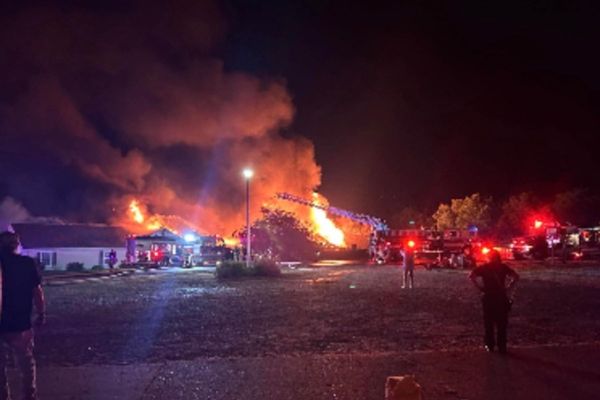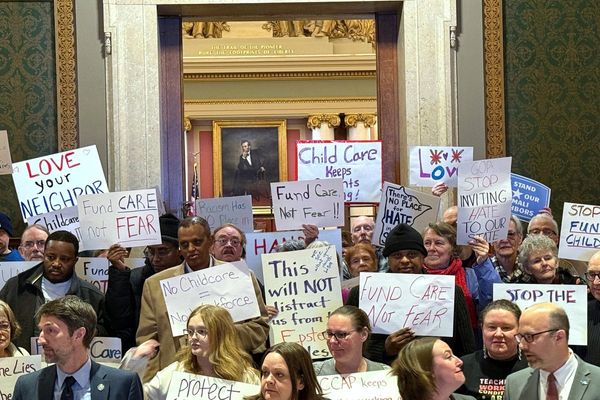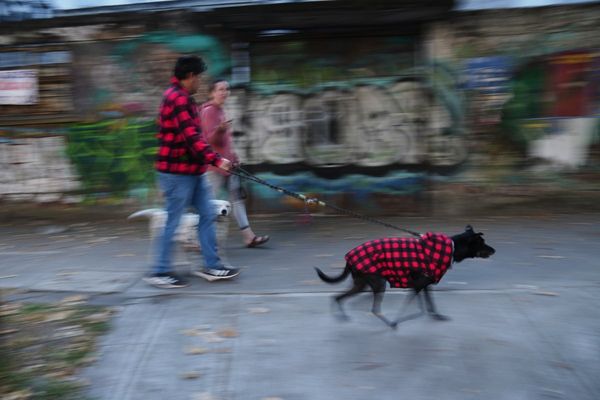NEW YORK — Officially, Saquon Barkley is questionable for Sunday’s season opener against the Denver Broncos at MetLife Stadium.
“I guess we’ll see,” Barkley said Friday with a twinkle in his eye.
Unofficially, all signs point to Barkley gearing up to make his highly-anticipated return almost a full year out from a devastating right knee injury.
“I’ve been fantasizing about getting back on that field with my teammates and playing there in front of fans,” Barkley said after limited participation in practice. “Whenever the opportunity does come, it’s something I’m definitely going to cherish and never take for granted again.”
Whether Joe Judge plans to limit Barkley’s touches and snaps is unclear. The Giants will have to turn around quickly to a Thursday Night Football Week 2 visit to division rival Washington.
Still, Judge said he’s only focused on beating Denver, and what he wants to know from his doctors is whether a player is ready or not. Once Barkley is in uniform, he could be on a pitch count or he could be all systems go, depending on the flow of the game.
“A lot of decisions get made in-game,” Judge said. “To me, it always comes down to if the doctor says the guy is healthy, I got to take his word on it right there.”
“I’ll do whatever the team wants me to do,” Barkley said with a smirk.
The Broncos, for their part, expected Barkley to play all along. They weren’t buying this week’s uncertainty. Edge rusher Von Miller said stopping the Giants’ running back takes everyone.
“Barkley? I guess you have to go back and watch his highlight tape,” Miller said Thursday. “That could really kill some confidence because you see some of the stuff he [did] before he got hurt. It was just amazing.”
“He has this crazy jump cut, and he can jump off one foot back into his run,” Miller continued. “He has incredible balance. He’s 230 pounds, but he’s fast. He runs like a 4.3. He creates separation from DBs. Any little space, he’s taking it. He’s big, he’s strong. He can run you over. He can jump around you, he can spin. He can jump over top of you, he can stiff arm.”
Miller said the only way to stop Barkley is to “corral him” with two, three or four guys. In other words, Vic Fangio’s defense is going to have to sell out to stop the dynamic fourth-year back.
“I know defensive coaches say this around the league, but it’s definitely true: we’ve got to have all 11 guys on the ball whenever he gets it,” Miller said.
Corner Adoree Jackson (left ankle sprain) is the only other questionable Giant on the injury report, though he spoke Thursday as if he were playing, too.
Tight end Evan Engram (left calf) is out, a disappointing development after a strong training camp as one of Daniel Jones’ favorite targets.
But the good news is that Jones’ three new offensive weapons are all a go for their Giants debuts on Sunday — wideouts Kenny Golladay (hamstring) and Kadarius Toney (hamstring) and tight end Kyle Rudolph (foot) — despite their limited designations at Friday’s practice.
And Barkley’s presence on the field should give the Giants an initial emotional lift, too.
“That’s like my brother,” wideout Sterling Shepard said. “I love playing with him. I’m just happy to be back out on the field with him. It’s been a long road.”
Granted, Barkley’s presence is no guarantee of success. In Week 1 of last season, the Steelers bottled Barkley up for a career-low six rushing yards on 15 carries in a 26-16 loss. Barkley had 60 receiving yards but also surrendered a sack on a blown blitz pickup, his Achilles heel.
On Friday, Barkley revealed that he entered the next week’s game in Chicago with so much frustration that he believes it contributed to his season-ending injury on a second-effort against Bears safety Eddie Jackson.
Barkley tore the ACL, partially tore the meniscus and strained the MCL in his right knee that day on Sept. 20, 2020 at Soldier Field. He waited until Oct. 30 to let the swelling in his MCL go down before having surgery.
“I do think the frustration of Week 1 led me to go into Week 2 with a different mindset,” he said. “That’s something that I’ve talked [about] with my family and teammates. Last time I played a game of football, I didn’t play in the right place of heart. It wasn’t out of love. It was kind of to show, like, this is who I am. And I will never allow that to happen again.”
Barkley said the biggest turning point in his rehab was on Aug. 9, though, about two weeks into training camp, when the Giants’ medical staff finally let him start practicing.
Barkley admitted he was pushing the training staff to let him play actual football instead of running alone on the back field.
“I kind of told them that I’m at the point where there’s no more I can do over there,” Barkley said. “I’ve got to start experiencing some contact, some football situations. Running all day is good, but at the end of the day I’m not a track runner, I’m a football player. And when I got out on the field and started practicing, I found myself not really thinking about my knee.”
“When I started to do football specific stuff and put a ball in my hand,” he added, “my reaction and everything would just come so easy because it’s something I’ve been doing since I was a little kid … That [was] the big hurdle, the reason why we’re even having this conversation right here.”
Sunday it is.







